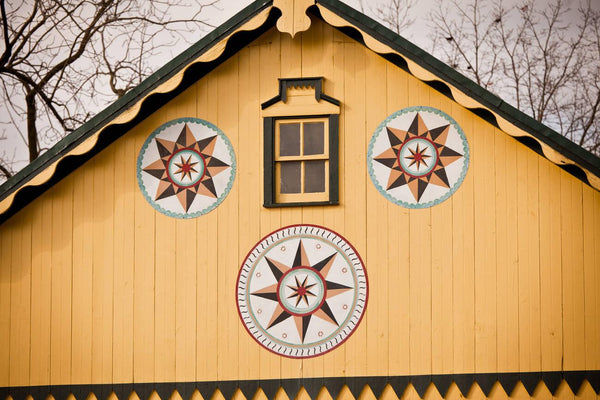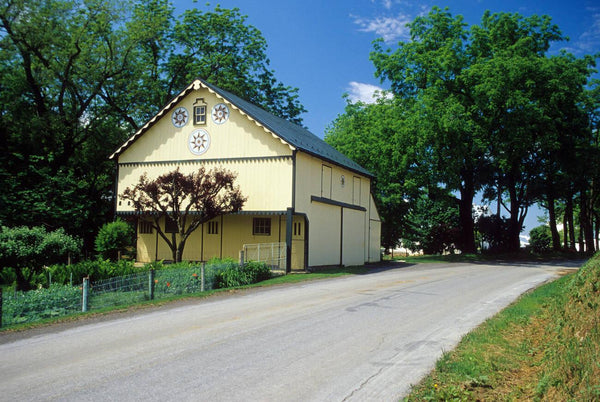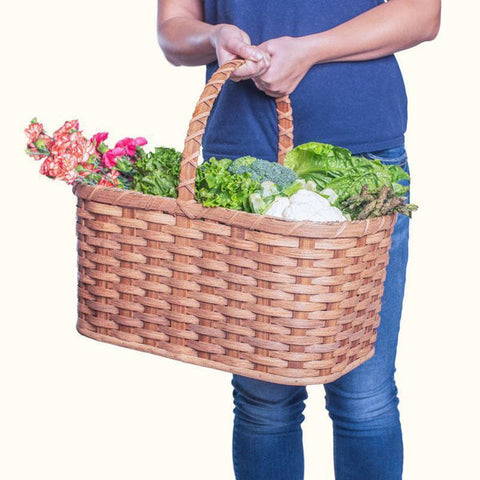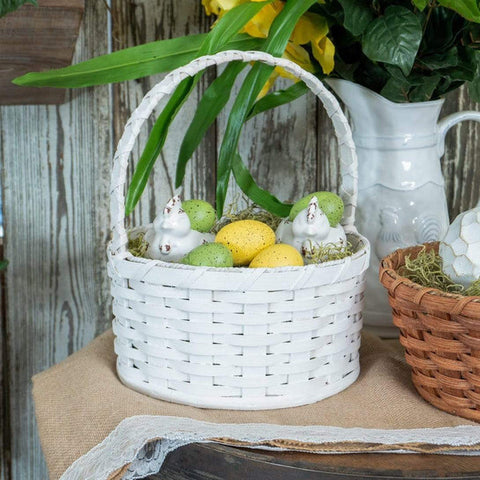Every culture has its own folk art that represents the group’s beliefs and interests, and Amish barn signs are as mysterious as they are distinctive. The mystery surrounding these artworks lies in their nature and purpose.
Are Amish barn signs an example of what is known as hex signs, or are they something else? Where and why did this fascinating custom originate?
We look at the story behind these symbols of Amish culture and their relevance today. So, keep reading to discover a fascinating world of art and lore as we uncover the history and meaning of these much-loved emblems.
What this article covers:
- What are Hex Signs?
- What Do Amish Barn Signs Mean?
- Barn Signs and Baskets: Symbols of Amish Culture
- Where Do Amish Barn Signs Come from?
What are Hex Signs?

Hex signs are symbols, often associated with magic, that are described as a form of ‘Pennsylvania Dutch folk art’. They’re easily recognized by their colorful distinctive stars-in-circle designs. The word ‘hex’ originates in the German word for witch, and the word hex became associated with spells and magic.
There are differences in opinion about this topic, but the prevailing theory is that a ‘hex sign’ has talismanic properties.
That means that, like any talisman, it is displayed to bring good fortune, or ward off evil influences. This practice was very popular in Europe in days gone by, and it lives on in the traditions and art of many cultures.
Are Amish Barn Signs Hex Signs?
In short, no Amish barn signs aren’t the same as hex signs. Hex signs are the product of Pennsylvania Dutch culture, but the Amish don’t produce hex signs.
The original intention of Amish barn signs seems to have been nothing more than colorful folk art. It was only in the 1920s that these became known as ‘hex signs’. It may have been then that this form of folk art took on a different meaning for outsiders.
Back then, little was known and understood about Amish culture and tradition. As the Amish live separately from the rest of society, few outsiders took the time to get to know and understand their customs.
To relegate this lovely art form to the category of ‘hex signs’ diminishes their importance as icons of Amish folklore and art. Amish barn signs are as decorative as their famous Amish patchwork quilts, displaying similar imagery like birds, flowers, and other motifs from nature.
What Do Amish Barn Signs Mean?

Amish barn signs may mean different things to different communities. They can be symbols of protection or good fortune. This was more relevant in the early days of Amish settlement in America. The newly arrived settlers had to adapt to a new environment, and hope for pleasant weather and a good harvest.
Therefore, Amish barn signs also serve a practical purpose. But they are mostly decorative in nature like all forms of folk art are. Most Amish barns would not stand out amongst the array of homogenous wooden structures if they did not have some identifying characteristics.
But much like the Amish blue door phenomenon, these symbols are sometimes attributed meanings they do not deserve. Some communities love to identify themselves as a group with blue doors throughout their town. But not all Amish communities have this affinity for blue doors!
Are Barn Signs Unique to the Amish?
It is deeply ingrained in human nature to look for meanings in the symbols we see around us. We constantly look to others’ traditions as evidence of how they differ from ours. In doing so, we often overlook how similar we actually are.
Barn signs are not unique to the Amish people, just as wooden barns are not exclusively Amish either! The wooden barn is as American as the land itself, a symbol of America. The earliest ones were simple, open structures with a timber-frame construction, not very different from early Amish ones.
Most of America’s inhabitants either immigrated to the US, or their parents or grandparents did. With such a multicultural melting pot, it is natural to find elements of a variety of cultures. These cultural groups have their own talismans, superstitions, beliefs, and of course, folk art.
Barn Signs and Baskets: Symbols of Amish Culture

Just as hand-painted barn signs have become synonymous with Amish folk culture, so too has their talent for weaving wicker baskets. Both can be practically used within the community, and also be manufactured for sale.
This provides the Amish with reliable streams of income. This is especially true of Amish wicker baskets.
The Amish have passed this custom down through time, and love to share this ancient craft with the world. Every gardener’s harvest basket and rustic bread basket is a true representation of the baskets used by the Amish themselves. You can purchase these gorgeous wicker creations for yourself, and gift them to friends.
Amish baskets are incredibly versatile. Their cool Easter baskets will make beautiful repurposed gift baskets after they do duty as holders for your children’s or grandchildren’s Easter eggs. And their rustic wicker baskets for shelves look right at home in a farmhouse pantry or minimalist living space.
Where Do Amish Barn Signs Come from?
The Amish have a long history of adorning their iconic wooden barns with handmade signs. When the Amish settled in America in the 1700s, they erected wooden barns to support their farming lifestyle. In time, their barns came to be decorated with charming motifs.
The star (especially the “hexagram’) is a popular theme in ancient pagan lore. This is a common theme in the history of old Europe, the birthplace of the Amish forebears. These early barn signs were therefore representations of their cultural past and their connection to these ancient European roots.
The tradition of colorful barn signs has since become a part of Amish culture. Many non-Amish people have grown to appreciate this art form, and it’s become highly sought after. Other cultures are also known for signs and artworks that promise good fortune, but Amish barn signs have a unique and distinctive style.
Are Amish Barn Signs a Traditional Pastime or Superstitious Ritual?
Amish barn signs have become identifiable symbols of Amish culture. But are they a quaint traditional pastime, or a superstitious ritual? A lot of the mystery relates to the designs used in Amish barn signs. The iconic star in a circle motif is often confused with pagan practices.

More conservative Old Order Amish communities believe that hex signs are in fact pagan elements of superstitious belief. Hence they don’t encourage this practice in their communities. This is just one example of how Old Order Amish beliefs differ from more progressive communities.
It’s important to note that Amish barn signs differ from “hex signs”. However, many in the greater Amish community enjoy the traditional pastime of producing barn signs. This product of the material culture of the Amish has been passed down through the generations. This Amish tradition can now be said to be a symbol of the culture.
Conclusion
When people don’t look a little deeper and get to know a cultural group’s history, anything that identifies that culture can be misrepresented.
Amish barn signs are charming traditional folk art that’s become a part of greater American culture. The only ‘magic’ here is the magic of their talent in woodwork, arts, and crafts.
Yet the Amish remain humble about these talents, knowing that their true reward comes from their dedication to their faith and their communities.
Did You Find Our Blog Helpful? Then Consider Checking:


